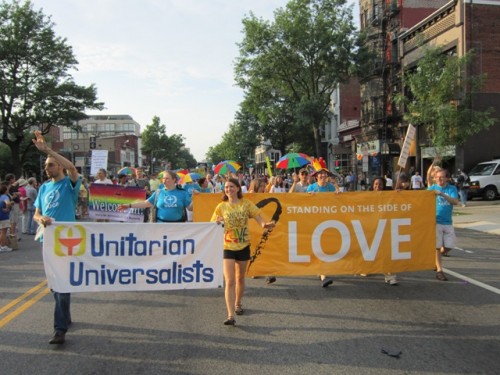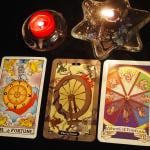Today is St. Patrick’s Day, a yearly holiday celebrating Ireland’s favorite patron saint. While it’s a big event in Ireland (and used to be a very solemn occasion), in America it’s a green-dyed bacchanal where everyone is “Irish for a day” (let’s not even start on the horridly stupid “unofficial” St. Patrick’s Day celebrations on college campuses). For some modern Pagans (whether Irish or not), St. Patrick’s Day isn’t a day of celebrations, as they see Patrick, famously attributed with converting Ireland to Christianity, as committing something akin to cultural genocide.
“The “snakes” that Patrick drove out of Ireland were the Druidic priests, who had serpents tattooed on their forearms. Celebrating him is like celebrating Stalin or Hitler.”
Pagan author Isaac Bonewits called the day “All Snakes Day”, and penned songs calling for the return of the “snakes” that Patrick is famously attributed with driving out, since many claim the “snakes” are actually a metaphor for Pagans (Ireland hasn’t had real snakes in it since the last ice age).
“St. Patrick casting out the serpents”
“He did not banish the snakes: Ireland never had any. Scholars now consider snakes a metaphor for the serpent of paganism.”
For years now, several individuals have worked to debunk this idea as well. It seems the “snakes = Druids” metaphor is a relatively recent invention, as was the idea that Patrick “drove them out.” P. Sufenas Virius Lupus, a Celtic Reconstructionist Pagan (and scholar) who has extensively studied Irish myth and folklore, had this to say on the subject.
“Unfortunately, this isn’t true, and the hagiographies of St. Patrick did not include this particular “miracle” until quite late, relatively speaking (his earliest hagiographies are from the 7th century, whereas this incident doesn’t turn up in any of them until the 11th century). St. Patrick’s reputation as the one who Christianized Ireland is seriously over-rated and overstated, as there were others that came before him (and after him), and the process seemed to be well on its way at least a century before the “traditional” date given as his arrival, 432 CE, because Irish colonists (yes, you read that right!) in southern Wales, Cornwall, and elsewhere in Roman and sub-Roman Britain had already come into contact with Christians and carried the religion back with them when visiting home.”
His assertions are backed up by historian Ronald Hutton in his book “Blood & Mistletoe: The History of The Druids in Britain.”
“[Saint Patrick’s] letters do, however, strongly suggest that the importance of Druids in countering his missionary work was inflated in later centuries under the influence of biblical parallels, and that Patrick’s visit to Tara was given a pivotal importance that it never possessed – if it ever occurred at all – to suit later political preoccupations. […] The only appearances of Druids in documents attributed to Patrick himself occur in some that are generally thought to have been composed after his death.”
The simple fact is that paganism thrived in Ireland for generations after Patrick lived and died, and, as Lupus puts it, ” the ‘final’ Christianization of the culture didn’t take place until the fourteenth century CE.” There was no Irish pagan genocide, no proof of any great violent Druid purge in Ireland, it simply doesn’t exist outside hagiography. By the time hagiographers started speaking of snakes and Druids, Irish paganism was already a remnant, and Irish Christianity the dominant religious force on the island. They were more worried about establishing heroic Irish saints than eradicating traces of paganism. Further, as Celtic Reconstructionist Morgan Daimler points out, it makes almost no sense within the context of Patrick’s tales to equate his snake-driving action as an anti-pagan allegory.
“Quite frankly the rest of Patrick’s hagiography has him dueling Druids right and left, killing those who oppose him with callous righteousnes, so why would the story suddenly get cryptic about him driving the Druids out? Every other page was proclaiming it proudly! No, this particular tidbit – which is suspiciously exactly the same as a story from the life of a French saint – was always meant to be literal. The earliest reference I have found to anyone thinking the snakes meant Druids (and thanks to the friend who helped me find it) is in the Fairy Faith in Celtic Countries from 1911 where someone states that he believes based on a story that because a certain place was where the Druids last stronghold was and also the place Saint Patrick drove the snakes that the snakes must represent the Druids, but it’s just faulty logic (Evans Wentz, 1911). The snakes in the story were just meant to be snakes, just as the toads were toads and Saint George’s dragon was a dragon.”
Others have made these points before, yet the snakes = Irish pagans meme persists, fueling all sorts of reactions. Some cling to it simply because it feels right, or because they like the idea of a holiday dedicated to pagan/Pagan resistance to conversion. However, as Alexei Kondratiev pointed out in “The Apple Branch: A Path to Celtic Ritual,” one who wants to practice a Celtic form of Paganism, connected to the living, breathing, Celtic lands and peoples, should connect to them as they are, not simply as they wish them to be.
“Neo-Pagans, who will be familiar with the two ritual cycles we discussed previously, but not with this one, may be tempted to reject it as too ‘Christian’ in inspiration. To this we may again reply that Christianity is a major part of the Celtic heritage, and cannot be removed from it without seriously distorting the whole. […] Our circle’s celebration of St. Patrick’s Day, for instance, need not be given over to green beer, plastic leprechauns, and such commercialized images of ‘Irishness’. One could, if one wished, ritually use the figure of St. Patrick, in a way that emphasized positive aspects of Irish identity…”
Kondratiev goes on to note that St. Patrick’s day became a hugely important holiday during a time of English oppression, becoming a “manifestation of both religious and ethnic identity.” To simply deny the huge role this holiday has played in Irish history, in the Irish’s sense of themselves, would be a disservice to those who believe that honoring our ancestors is vital. To erase St. Patrick’s day also erases a vital connection to Irish history and culture. This doesn’t mean one has to actively celebrate it, but it also means that those who want to grapple with this day need to do so honestly.
If, as a Pagan, one cannot stomach the thought of honoring the name of any Christian missionary, no matter what the circumstance, then the effort should be in creating a positive replacement instead of a protest or rebellion. P. Sufenas Virius Lupus makes a very good case for replacing St. Patrick’s day with a day to honor Cú Chulainn.
“What I would suggest is that, given that Patricius may have usurped a local festival of Macha in the area around Armagh, perhaps what could instead be celebrated is the date that Cú Chulainn first took up arms, upon which he did so in order to fulfill a partial prophecy he heard that whomever took up arms for the first time on that day would be famed forever after; he only learned later that the rest of the prophecy revealed that the famous hero would only live a very short life, to which he responded that it would be better to live but one day and one night in the world if everlasting fame were to be attached to him. This active taking up of the heroic life and all of its responsibilities, including death (most likely on behalf of one’s people, as a warrior), was the date on which he became the protector of the people of Ulster and thus of Emain Macha and his uncle Conchobor mac Nessa’s kingship. What more appropriate occasion, therefore, to celebrate the hero-cultus of Cú Chulainn than on the day that he decided to take up the heroic life?”
There are no doubt other worthy replacements, but the point is the same, building on and changing a holiday organically within the cultural context. A day about honoring Irish culture instead of thumbing one’s nose at an insulting metaphor. The popular myth may be that snakes were pagans, and that Patrick drove them out, but that doesn’t mean we are obligated to believe it.















